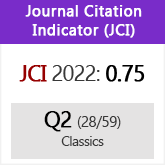The Roman Law of Talion and its correlative origin: antiquity and innovation
DOI:
https://doi.org/10.3989/emerita.2017.13.1639Keywords:
talio, etymology, correlation, proportionality, crime, punishmentAbstract
The Law of Talion is usually understood as «an eye for an eye». However, Roman law is far from being as concise and strict as that of the Bible. Whilst not forgetting the option of membrum pro membro, the interpretation of Latin examples tells us that punishments tended to be comparable and not equal, materially speaking, to the harm caused. The linguistic analysis of talio, derived from the indefinite talis and the correlative structure (quale scelus, talis poena) in which it appears, leads us to see this feminine substantive of action as a neologism of proportional reference that encouraged Roman law to evolve towards substitute punishments that were less gory. In order to understand the spirit of the Law of Talion, we must take into consideration its form, which above all is made up of the indefinite talis as a correlative of qualis referring to the damage or harm caused.
Downloads
References
Benveniste, É. 1969: Le vocabulaire des institutions indo-européenes. 1. Économie, parenté, société , París.
Borger, R. 19792 : Babylonisch-Assyrische Lesestücke , Roma.
Chassignet, M. 1986: Caton , Les Origines , París.
Daremberg, Ch. y E. Saglio, E. 1969: Dictionnaire des antiquités grecques et romaines, Graz.
DELI 2008: Cortelazzo, M. y Zolli, P., Dizionario etimologico della lingua italiana, Bolonia.
DELL 2001: Ernout, A. y Meillet, A., Dictionnaire étymologique de la langue latine. Histoire des mots , París.
De Vaan, M. 2008: Etymological Dictionary of Latin and the other Italic Languages, Leiden.
Elliger, K. y Rudolph, W. (eds.) 1966/774 : Biblia Hebraica Stuttgartensia , Stuttgart.
Fruyt, M. 2013: «La corrélation en latin: statut et évolution», en Inkova, O. y Hadermann, P. (eds.), La Corrélation. Aspects syntaxiques et sémantiques , Ginebra, pp. 109-146.
García-Hernández, B. 1997: «Sinonimia y diferencia de significado», RSEL 27, pp. 1-31.
García-Hernández, B. 2012: «En torno a la semántica coseriana. Sinonimia y sistema clasemático», en Martínez del Castillo, J. (coord.), Eugenio Coseriu (1921-2002) en los comienzos del siglo XXI , Málaga, pp. 57-72.
García-Hernández, B. 2017: «Lexicalización en los indefinidos latinos. T?lis como base léxica», Études de linguistique latine 2. Pallas 103, pp. 211-218.
Haudry, J. 1973: «Parataxe, hypotaxe et correlation dans la phrase latine», BSL 68, pp. 147-186.
IEW 1959: Pokorny, J. Indogermanisches etymologisches Wörterbuch , Berna.
Leumann, M. 1977: Lateinische Laut- und Formenlehre , Múnich.
LEW 1982: Walde, A. y J. B. Hofmann, Lateinisches etymologisches Wörterbuch, I-II , Heidelberg.
Orlandini, A. y Poccetti, P. 2012: «L’évolution de l’ancien diptyque indo-européen *kwo- … *to- du latin aux langues romanes», en Christol A. y Spevak, O. (éds.), Les evolutions du latin , París, pp. 27-44.
Panchón Cabañeros, F. 1982: La frase correlativa en latín arcaico , Universidad de Salamanca, Tesis doctoral inédita.
Rahlfs, A. 1979: Septuaginta , Stuttgart.
RE 1932: Paulys Realencyclopädie der classischen Altertumswissenschaft , Bd. IV A 2, Stuttgart.
Sánchez Salor, E. 1984: Sintaxis Latina: la correlación , Cáceres.
Tosi, R. 2000: Dizionario delle sentenze latine e greche , Milán.
Downloads
Published
How to Cite
Issue
Section
License
Copyright (c) 2017 Consejo Superior de Investigaciones Científicas (CSIC)

This work is licensed under a Creative Commons Attribution 4.0 International License.
© CSIC. Manuscripts published in both the printed and online versions of this Journal are the property of Consejo Superior de Investigaciones Científicas, and quoting this source is a requirement for any partial or full reproduction.All contents of this electronic edition, except where otherwise noted, are distributed under a “Creative Commons Attribution 4.0 International” (CC BY 4.0) License. You may read here the basic information and the legal text of the license. The indication of the CC BY 4.0 License must be expressly stated in this way when necessary.
Self-archiving in repositories, personal webpages or similar, of any version other than the published by the Editor, is not allowed.














